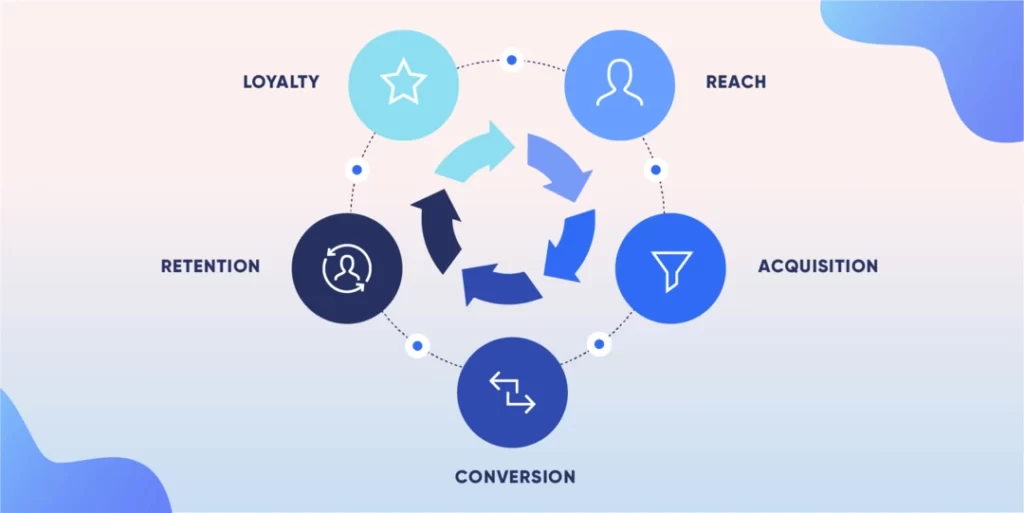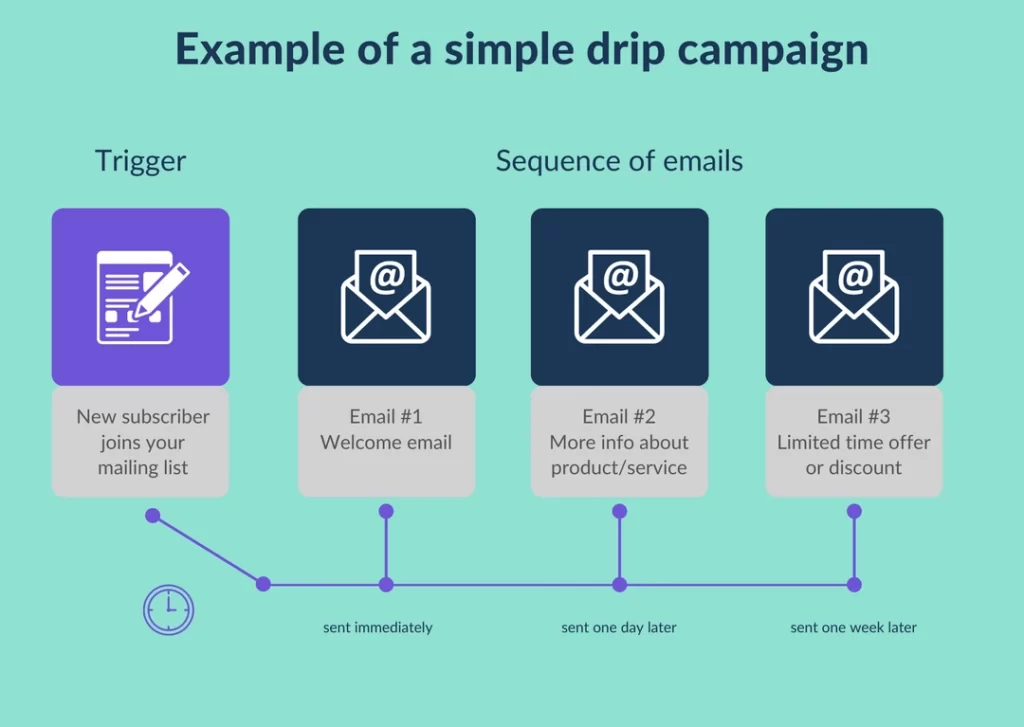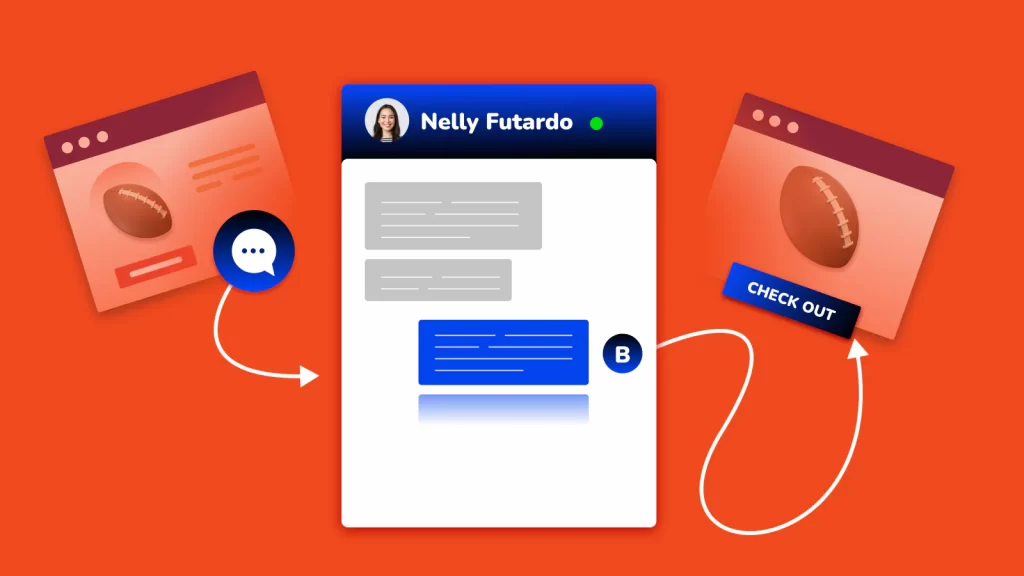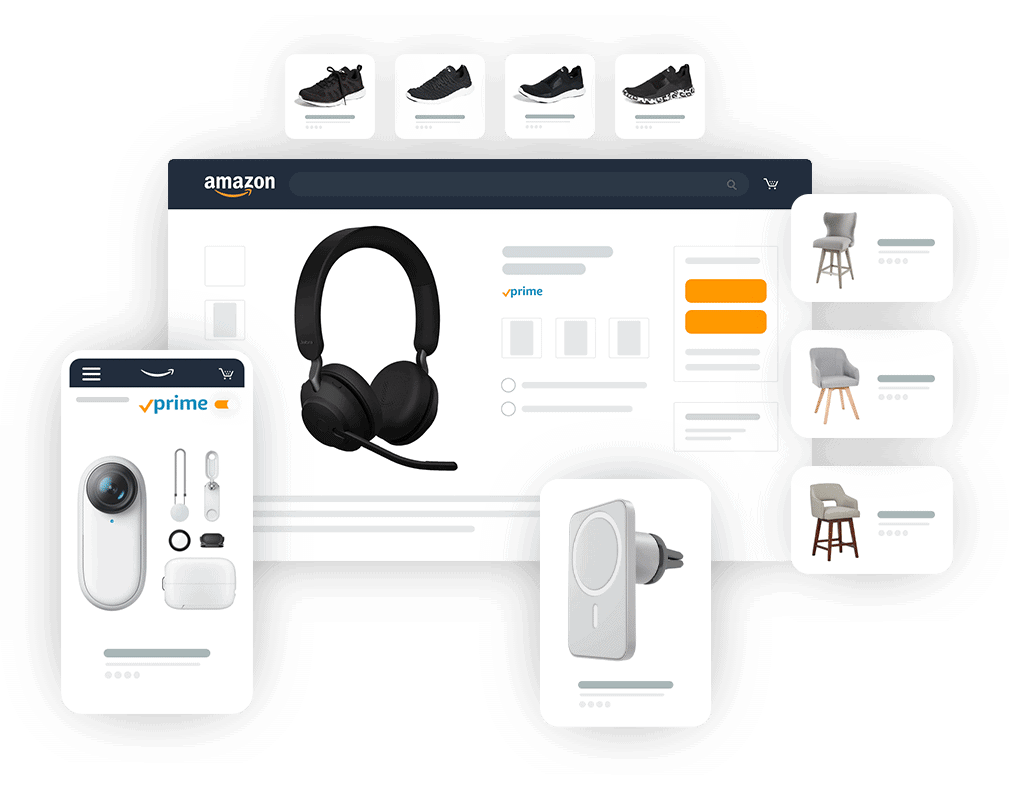Lifecycle Marketing: Maximising Customer Value and Retention
Are you tired of constantly chasing new customers while struggling to retain the ones you already have? Well, have no fear because today, we're diving headfirst into the world of lifecycle marketing.
In this blog post, we'll explore the incredible power of lifecycle marketing and how it can help you maximise customer value and retention. Trust me; this is a game-changer you will want to take advantage of. But before we get into the nitty-gritty, let me hit you with a startling statistic: did you know that acquiring a new customer can be anywhere from five to 25 times more expensive than retaining an existing one? Yes, you read that right!
If you still need convincing, consider this: increasing customer retention rates by just 5% can boost profits by 25% to 95%. Now, that's a statistic that should make you sit up and take notice!
So, if you're ready to learn how to build stronger, more profitable relationships with your customers, and turn them into loyal advocates for your brand, then keep reading. We'll explore the different stages of the customer lifecycle, uncover valuable strategies and techniques to engage customers at each step and equip you with the tools you need to make the most of every interaction.
Whether you're a seasoned marketer looking to up your game or a business owner striving for sustainable growth, this article is packed with insights and practical advice you can immediately implement. Get ready to revolutionise your marketing approach and unlock the hidden potential within your customer base.
Table of Contents
Understanding the Customer Lifecycle

To effectively implement lifecycle marketing, it's essential to grasp the concept of the customer lifecycle. The customer lifecycle refers to the journey from the first point of contact with a business to becoming a loyal advocate. While the stages may vary slightly depending on the industry or business model, the core stages typically include:
- Awareness: This is the initial stage where customers become aware of your brand, products, or services. It involves capturing their attention and piquing their interest through targeted marketing efforts.
- Acquisition: In this stage, customers make their first purchase or transaction with your business. The goal is to convert prospects into paying customers and provide a seamless onboarding experience.
- Activation: Activation occurs when customers engage with your product or service and derive value from it. It's essential to ensure a positive user experience and encourage customers to explore the full potential of your offering.
- Retention: Retention fosters long-term relationships with customers and keeps them engaged. This stage involves strategies to minimise churn, increase customer loyalty, and drive repeat purchases.
- Advocacy: The final stage represents loyal customers who become brand advocates and promote your business to others. Advocacy is a powerful asset for generating referrals and positive reviews and expanding your customer base.
The Benefits of Lifecycle Marketing

Implementing lifecycle marketing offers numerous advantages for businesses seeking sustainable growth and profitability. Let's explore some of the key benefits:
- Enhanced Customer Experience: Lifecycle marketing enables personalised and relevant customer interactions throughout their journey. By understanding their preferences, pain points, and needs at each stage, businesses can deliver tailored experiences that foster engagement and loyalty.
- Improved Customer Retention: Retaining existing customers is far more cost-effective than acquiring new ones. Lifecycle marketing strategies focus on building solid relationships and providing ongoing value, increasing customer satisfaction and reducing churn rates.
- Increased Customer Lifetime Value (CLV): By nurturing customers at various stages of the lifecycle, businesses can extend the duration and value of their relationship. Increased CLV translates into higher revenue and profitability over the long term.
- Better Targeting and Segmentation: Lifecycle marketing uses data-driven insights to segment customers based on their lifecycle stage, behaviours, and preferences. This enables businesses to tailor their marketing messages, offers, and promotions, increasing conversion rates.
- Enhanced Marketing ROI: By aligning marketing efforts with the customer lifecycle, companies can optimise their marketing spend and resources. Targeted campaigns and personalised messaging improve conversion rates, reduce customer acquisition costs, and generate higher returns on investment.
Strategies for Effective Lifecycle Marketing
Now that we understand the customer lifecycle and the benefits of lifecycle marketing let's explore some proven strategies to implement this approach successfully:
1. Personalisation at Scale

Customers have come to expect nothing less than personalised experiences from businesses. It's all about catering to their unique needs and desires. Luckily, with technological advancements, companies now have powerful tools to meet these expectations and deliver personalised interactions on a large scale.
One of the critical weapons in a business's arsenal is data analytics. By harnessing the power of data, companies can gain valuable insights into their customers' preferences, behaviours, and purchase history. This information is like a treasure trove of knowledge, allowing businesses to understand their customers more deeply.
Once armed with this knowledge, segmentation comes into play. Segmenting customers into different groups based on their characteristics or behaviours allows businesses to tailor their messaging, recommendations, and offers to each group's needs and interests. It's like having a personalised shopping assistant who understands your preferences and guides you to the products or services that are most relevant to you.
But why stop there? Enter marketing automation tools. These nifty tools enable companies to automate marketing tasks, such as sending out personalised emails, creating targeted ad campaigns, and managing customer interactions across multiple channels. With marketing automation, businesses can ensure that each customer receives the right message at the right time without manually handling every interaction.
The goal here is to maximise engagement and conversions. By providing personalised experiences, businesses can significantly increase customer satisfaction, leading to higher engagement and better conversion rates. Customers feel seen and understood, which fosters trust and loyalty towards the brand.
So, in essence, combining data analytics, segmentation, and marketing automation tools empowers businesses to deliver tailored experiences to their customers at scale. It's like having a personal touch in a digital world where customers feel valued and appreciated. And by leveraging these strategies, businesses can create meaningful connections, drive sales, and stay ahead of the competition.
2. Content Marketing throughout the Lifecycle

Content marketing is a total game-changer when it comes to captivating customers throughout their entire journey! It's all about connecting with them more profoundly, offering something valuable and relatable. Content marketing has covered everything:
- Enlightening blog posts
- Captivating social media content
- Helpful tutorials
- Even heartwarming customer success stories
You see, it's not just about selling products or services; it's about building a genuine connection and providing customers with something more. Businesses can stand out by creating and distributing content that educates, entertains, and inspires. It's like becoming a trusted friend who is always there to lend a helping hand or share an interesting tidbit.
Take blog posts, for instance. They're like a treasure trove of information, giving your audience knowledge and insights. From industry trends and expert advice to practical tips and how-to guides, you can empower your customers and position your brand as an authority in your field. It's a win-win situation because not only are you showcasing your expertise, but you're also establishing a bond of trust and credibility.
And let's remember the power of social media! You can create a buzz around your brand with engaging content that resonates with your target audience. You can spark conversations, inspire discussions, and foster a community of like-minded individuals who share a common interest or passion. By tapping into the social media realm, you're building brand awareness and nurturing valuable customer relationships.
But it doesn't stop there! Content marketing goes beyond just information-sharing. It's about crafting narratives that inspire and evoke emotions. Think of those heartwarming customer success stories that tug at your heartstrings. They showcase real people who have benefited from your products or services, highlighting your positive impact on their lives. Such stories engage your existing customers and attract new ones who can relate to those experiences and want to join your brand's journey.
3. Email Marketing and Drip Campaigns

It's still a highly effective channel for engaging customers throughout their journey. It's like having a virtual companion that guides your customers along the way. But do you want to know something even cooler? Drip campaigns. These bad boys are like secret weapons in the world of lifecycle marketing.
So, what exactly are drip campaigns? Imagine a series of automated emails triggered based on your customers' actions or even at particular intervals. It's like setting up a well-oiled machine that works tirelessly to nurture your leads, drive conversions, and even encourage repeat purchases. How awesome is that?
The power of drip campaigns lies in their ability to deliver timely, personalised, and targeted messages to your customers. It's like sending the right message at the right time while making your customers feel like you genuinely understand their needs and desires. And let's be honest, who doesn't love feeling understood?
By strategically crafting your drip campaign emails, you can create a seamless customer experience. You can welcome new subscribers with a warm and friendly message, introduce them to your brand, and gradually build a relationship with them. It's like building a solid foundation for a long-lasting connection.
But it doesn't stop there. Drip campaigns allow you to tailor your messages based on your customers' actions. For example, let's say a customer abandons their shopping cart without purchasing. You can gently remind them and offer a discount or free shipping to entice them to return and complete their purchase. It's like having a personal shopping assistant who can win your customers back.
And here's the best part: drip campaigns are highly automated. Once you set them up, they work their magic in the background, giving you more time to focus on other essential aspects of your business. It's like having a virtual assistant who handles the heavy lifting while you reap the rewards.
4. Loyalty Programs and Customer Rewards

Loyalty programs are such a game-changer for keeping customers happy and engaged! They can have a profound impact on customer retention and advocacy for businesses. By implementing a robust loyalty program, companies can create a strong bond with their customers and keep them returning for more.
Loyalty programs work wonders by offering attractive incentives and exclusive discounts and rewarding customers for their loyalty through repeat purchases or referrals. It's like rolling out the red carpet for your valued customers, making them feel special and appreciated. And who doesn't love feeling special?
These programs encourage customers to stick around and inspire them to promote your business to their friends and family actively. After all, who can resist sharing the good news about the fantastic rewards and benefits they receive? It's a win-win situation for both the business and its loyal customers.
When customers feel rewarded for their loyalty, they become more satisfied with their overall experience. They develop a sense of attachment to your brand, making it less likely for them to jump ship and switch to a competitor. It's like building an unbreakable bond of trust and appreciation.
But wait, there's more! Loyalty programs are not just about making customers feel warm and fuzzy inside. They also provide valuable data that can be used to personalise and target your marketing efforts. By analysing customer preferences, purchase patterns, and interactions, you can gain insights into what motivates them and tailor your offerings accordingly. This personalisation adds a magic touch to the customer experience, making them feel understood and valued.
5. Proactive Customer Support and Engagement

Establishing and nurturing strong customer relationships is crucial, and it all starts with prompt and proactive customer support. Businesses can satisfy customers and foster loyalty and trust by being responsive and attentive to their needs.
One effective way to offer immediate assistance is by implementing live chat or chatbot systems. These tools enable businesses to provide real-time support, ensuring customers receive timely responses to their queries or concerns. Whether troubleshooting a technical issue, answering product inquiries, or assisting with a purchase, live chat and chatbots offer convenience and efficiency, making customers feel valued and heard.
But it doesn't stop there. Engaging with customers beyond the initial interaction is equally important. Personalised follow-ups can go a long way in building lasting relationships. Sending a personalised email or message after a purchase or a support request shows that the business genuinely cares about the customer's experience. It allows them to express gratitude, ask for feedback, or check in to see if everything is going well. This personal touch adds a human element to the customer-business interaction, fostering a sense of connection and loyalty.
Feedback is a valuable resource for any business looking to improve. Companies can gain valuable insights into their strengths and weaknesses by proactively seeking customer input through surveys or feedback requests. This allows them to identify areas where they excel and areas needing improvement. Listening to customer feedback and taking meaningful action demonstrates a genuine commitment to customer satisfaction and helps businesses stay attuned to evolving customer needs.
6. Continuous Analysis and Optimisation

Lifecycle marketing is an exciting journey that keeps businesses on their toes, constantly analysing and optimising their strategies. It's all about understanding the different stages of a customer's journey and ensuring your marketing efforts are finely tuned to meet their ever-changing needs. By keeping a close eye on critical metrics and diving into customer data, businesses can identify bottlenecks and uncover hidden opportunities to refine their approach.
Think of it like a detective story, but instead of solving a crime, you're unravelling the mysteries of customer behaviour. Armed with data and insights, you become a marketing sleuth, piecing together clues to improve your strategies. This iterative process allows you to fine-tune your approach and adapt to the dynamic landscape of customer expectations.
One of the key benefits of a data-driven approach is the ability to make agile decisions. You can let the numbers guide you instead of relying on gut instincts or guesswork. You can gain valuable insights into customer preferences, behaviours, and pain points by analysing customer data. These insights provide a solid foundation for making informed decisions that resonate with your audience.
In the fast-paced marketing world, customer needs and expectations are constantly evolving. What worked yesterday might not work today. That's where the power of a data-driven approach shines. By regularly monitoring key metrics and analysing customer data, you can stay ahead of the curve and ensure your marketing efforts align with the changing tides.
Imagine you're sailing a ship in uncharted waters. You can't rely on old maps and outdated strategies. Instead, you need real-time data and a keen sense of observation to navigate successfully. Lifecycle marketing operates on a similar principle. By keeping a finger on the pulse of your customers, you can quickly adapt your strategies to their evolving needs, keeping your marketing efforts relevant and impactful.
So, embracing lifecycle marketing and a data-driven approach is crucial whether you're a small business owner or part of a larger organisation. It's like having a compass and a roadmap that constantly guides you towards success. You can unlock new opportunities, overcome obstacles, and create meaningful connections with your customers by continuously analysing, optimising, and adapting.
Success Stories in Lifecycle Marketing

While the strategies outlined above provide a strong foundation, examining real-world examples of businesses that have excelled in lifecycle marketing is helpful. Let's explore two notable success stories:
Amazon: Mastering Personalisation and Recommendations
Amazon is a prime example of a company that has revolutionised lifecycle marketing through personalisation and recommendation algorithms. By leveraging customer browsing and purchase history data, Amazon delivers personalised product recommendations, tailored offers, and relevant content. This approach has contributed significantly to customer retention, conversion rates, and overall success.
Spotify: Engaging Users with Curated Playlists and Recommendations
Spotify, the popular music streaming platform, employs lifecycle marketing to engage and retain users. Through personalised playlists, curated recommendations based on listening habits, and targeted email campaigns, Spotify creates a seamless user experience and encourages users to explore more music. This focus on delivering value throughout the customer lifecycle has helped Spotify become a dominant player in the industry.
Conclusion
Lifecycle marketing represents a paradigm shift in how businesses approach customer engagement and retention. By understanding the various stages of the customer journey and implementing tailored strategies, companies can cultivate long-term relationships, drive loyalty, and maximise customer lifetime value.
Throughout this guide, we explored the importance of lifecycle marketing, its benefits, and practical strategies to implement it successfully. From personalisation and content marketing to loyalty programs and continuous optimisation analysis, businesses have many tools to unleash the power of lifecycle marketing.
Remember, the customer journey is not a linear path. Customers may move back and forth between stages, and their needs and preferences may evolve. By staying agile, data-driven, and customer-centric, businesses can adapt their marketing efforts to meet customers where they are and deliver exceptional experiences at every touchpoint.
Now that you understand lifecycle marketing more deeply, it's time to apply these principles to your business. Identify the critical stages of your customer lifecycle, map out the touchpoints, and consider how you can optimise each step to foster engagement, retention, and advocacy.
Investing in lifecycle marketing can build a loyal customer base, increase customer lifetime value, and position your business for long-term success in today's competitive landscape. So, embrace the power of lifecycle marketing and embark on a journey to create remarkable customer experiences that will set your business apart.
